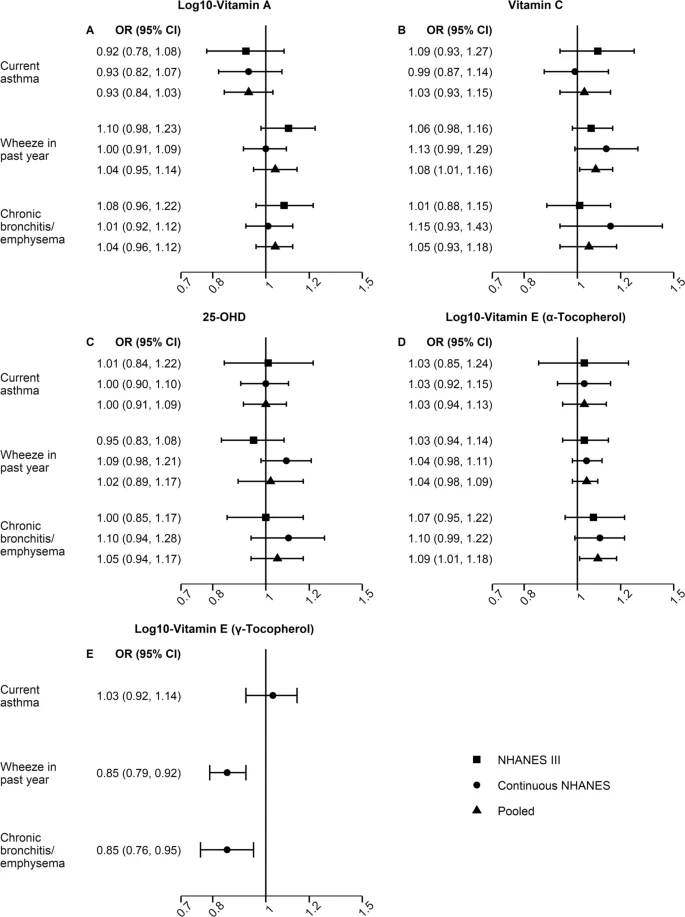- Research
- Open Access
Abstract
Background
Oxidative stress plays a key role in the pathogenesis of respiratory diseases; however, studies on antioxidant vitamins and respiratory outcomes have been conflicting. We evaluated whether lower serum levels of vitamins A, C, D, and E are associated with respiratory morbidity and mortality in the U.S. adult population.
Methods
We conducted a pooled analysis of data from the 1988–1994 and 1999–2006 National Health and Nutrition Examination Survey (participants aged ≥ 20 years). We estimated covariate-adjusted odds ratios (aOR) per interquartile decrease in each serum vitamin level to quantify associations with respiratory morbidity, and covariate-adjusted hazard ratios (aHR) to quantify associations with respiratory mortality assessed prospectively through 2015.
Vitamin supplementation and smoking were evaluated as potential effect modifiers.Results
Lower serum vitamin C increased the odds of wheeze among all participants (overall aOR: 1.08, 95% CI: 1.01–1.16). Among smokers, lower serum α-tocopherol vitamin E increased the odds of wheeze (aOR: 1.11, 95% CI: 1.04–1.19) and chronic bronchitis/emphysema (aOR: 1.13, 95% CI: 1.03–1.24). Conversely, lower serum γ-tocopherol vitamin E was associated with lower odds of wheeze and chronic bronchitis/emphysema (overall aORs: 0.85, 95% CI: 0.79–0.92 and 0.85, 95% CI: 0.76–0.95, respectively). Lower serum vitamin C was associated with increased chronic lower respiratory disease (CLRD) mortality in all participants (overall aHR: 1.27, 95% CI: 1.07–1.51), whereas lower serum 25-hydroxyvitamin D (25-OHD) tended to increase mortality from CLRD and influenza/pneumonia among smokers (aHR range: 1.33–1.75). Mortality from influenza/ pneumonia increased with decreasing serum vitamin A levels in all participants (overall aHR: 1.21, 95% CI: 0.99–1.48). In pooled analysis, vitamin C deficiency and 25-OHD insufficiency were associated with mortality from influenza/pneumonia, increasing mortality risk up to twofold.
Conclusions
Our analysis of nationally representative data on over 34,000 participants showed that lower serum levels of vitamins A, C, D, and α-tocopherol vitamin E are associated with increased respiratory morbidity and/or mortality in U.S. adults. The results underscore the importance of antioxidant vitamins in respiratory health.

No comments:
Post a Comment